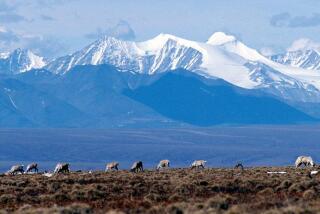Canadian oil: Could some of it be headed for California?
- Share via
Reporting from Seattle — Much of the focus behind Canada’s push to build a new oil pipeline to the West Coast has been to diversify its markets, to reduce its reliance on the U.S. as a customer. The Canadian government says it wants to start selling oil to China and South Korea.
But there are strong indications that California could be the ultimate destination for much of the oil shipped on the proposed Northern Gateway pipeline.
Analysts say California could see as much as half of the oil transported out of the tar sands of northern Alberta to a port on the coast of British Columbia, where it would be loaded onto tankers for destinations as yet unknown.
After the release in December of a University of Calgary study on the economics of transporting Canadian oil, energy economist Michal C. Moore, senior fellow at the university and a former California energy commissioner, predicted that half of Northern Gateway’s oil would go to “under-utilized California refineries,” the Calgary Herald reported, with the other half going to northern Asia.
Enbridge Inc., which is seeking to build the $5 billion, 731-mile pipeline, has by no means ruled out deliveries to the U.S. West Coast.
Paul Stanway, spokesman for the company, told the Los Angeles Times that “very probably” California would see some of the oil shipped through Northern Gateway, if it’s built.
“Northern Gateway’s not designed for that. The genesis was for markets in the Pacific Rim, but it’s certainly possible that some might go to California,” he said in an interview.
“I guess you could create just about any scenario based on blue-skying -- and if the project is built the oil could go anywhere there is demand at that time,” he added in an email later. “But Northern Gateway’s application is clearly based on our assessment of commercial demand from mostly Asian markets.”
Gerald Graham, a marine environmental consultant from Victoria, B.C., said Enbridge’s own environmental reports showed only a third of the more than 200 tankers a year projected to ship oil from Northern Gateway would take a northern route away from British Columbia, toward Asia. The rest are depicted on a pair of southern routes he said would lead more logically to refineries in Washington state, San Francisco and Los Angeles.
“They’re not heading for Asia. That’s starkly obvious,” said Graham, who reviewed the documents as part of a contract with First Nations groups in Canada who are opposing the pipeline.
For Canadian oil producers, it’s a question of money. Because of the high costs of transporting oil from Alberta by truck, rail and barge, Canadian oil currently sells for less than comparable world crude available to refineries on the U.S. coasts.
The University of Calgary study found that the bonus for accessing Gulf Coast markets by way of the proposed Keystone XL pipeline, recently vetoed by President Obama, would eventually reach nearly $10 a barrel. Shipping Canadian oil to California could net an extra $7.20 a barrel by 2020, while the “Asian differential” is $11.15.
But there are a lot of obstacles, perhaps most significantly California’s low-carbon fuel standards, which theoretically could block use of the carbon-intensive oil produced out of Canada’s tar sands.
“Where that crude winds up will be a function of three things: the distance from the wellhead, the technology of the refineries that are going to receive this stuff, and then the political climate wherever that refinery happens to sit,” said David Hackett, president of Stillwater Associates, an Irvine, Calif.-based energy consulting firm.
“California’s low-carbon fuel standards -- that’s the wild card in this thing now,” he said in an interview.
A federal judge in Fresno in December granted a preliminary injunction halting implementation of the standards. The state Air Resources Board has appealed, and it is unclear what final shape the regulations might take.
Hackett said the prediction that California might take half of Northern Gateway’s shipments “seems like a lot.”
On the other hand, he said, many of California’s refineries already are tooled to process the heavy bitumen shipped out of Alberta.
“There’s room in California without any technology upgrades for several hundred thousand barrels a day of Canadian-type crude. And that would displace crude that’s coming from, like, Iraq or Brazil or places like that. Stuff that’s coming in from a very long distance,” he said.
In other words, potentially good business for both Canada and the U.S.
“What [Enbridge] is saying is that sending oil to the U.S. West Coast does not contradict our desire to diversify markets. What we want to do is be able to capitalize on the highest price for the oil, and if that means shipping to the U.S. West Coast, we’ll take that,” Graham said.
“You can infer from that if the main consideration, and why wouldn’t it be, is price, that oil could go anywhere.”
RELATED:
Judge blocks California’s low-carbon fuel rules
Canada revs up for second fight over tar sands oil pipeline
Obama administration to deny Keystone XL pipeline permit
More to Read
Sign up for Essential California
The most important California stories and recommendations in your inbox every morning.
You may occasionally receive promotional content from the Los Angeles Times.













